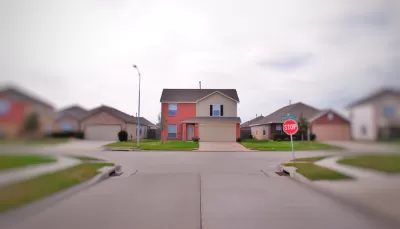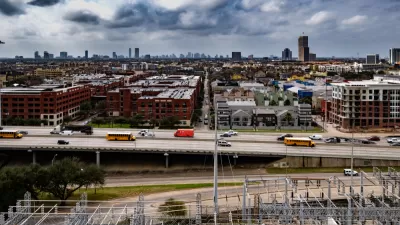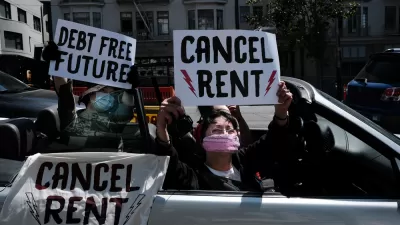Overcrowding and housing insecurity among Black and Brown communities led to disproportionately high COVID-19 fatalities, research shows.

Data from the Kinder Institute for Urban Research's 2021 State of Housing report "suggest a reason for the racial/ethnic differences in who COVID-19 killed," reports Stephen Averill Sherman. That reason: overcrowded housing. "[A]s scientists built knowledge of COVID-19’s spread, they learned that one needed more than a quick on-the-sidewalk encounter with an infected person to catch the disease. One needed to spend extended periods of time indoors with someone harboring the virus."
According to research from New York University's Furman Center, "it wasn’t necessarily population density but housing crowding that accelerated the virus’s contagion." Housing insecurity exacerbated by the pandemic increased overcrowding at the worst possible time. "[I]n Harris County, Hispanic-headed households are about 10 times more likely to be overcrowded than white non-Hispanic-headed households (10.9% vs. 1.2%). Black- and Asian-headed households are in the middle (4.3% and 4.9%, respectively). Hispanic Houstonians were also the ethnic/racial group with the most outsized death share from COVID-19."
Additionally,
[t]he types of jobs with high COVID-19 fatalities—construction, food preparation, health care support—are often done by Black and Brown Houstonians. The most recent ACS data show that working-age Black Harris County residents fill 48% of health care support positions despite being 20% of the population. Per 2018 Census department data quoted in a Houston Chronicle story, Hispanic Harris County residents represent 50% of its food service workers and 81% of its construction workers.
Sherman argues that the disproportionate rate of COVID-19 deaths in Houston's low-income households could have been reduced by more effective use of resources such as expanded unemployment benefits, more robust rental assistance, and hotel rooms where those diagnosed with COVID-19 could safely quarantine. "[O]ne lesson learned," Sherman writes, "is that while we share a lot of air with our coworkers and housemates, we are not all in this together."
FULL STORY: Houston had an overcrowding problem at precisely the wrong time: during a pandemic

Maui's Vacation Rental Debate Turns Ugly
Verbal attacks, misinformation campaigns and fistfights plague a high-stakes debate to convert thousands of vacation rentals into long-term housing.

Planetizen Federal Action Tracker
A weekly monitor of how Trump’s orders and actions are impacting planners and planning in America.

In Urban Planning, AI Prompting Could be the New Design Thinking
Creativity has long been key to great urban design. What if we see AI as our new creative partner?

Baker Creek Pavilion: Blending Nature and Architecture in Knoxville
Knoxville’s urban wilderness planning initiative unveils the "Baker Creek Pavilion" to increase the city's access to green spaces.

Pedestrian Deaths Drop, Remain Twice as High as in 2009
Fatalities declined by 4 percent in 2024, but the U.S. is still nowhere close to ‘Vision Zero.’

King County Supportive Housing Program Offers Hope for Unhoused Residents
The county is taking a ‘Housing First’ approach that prioritizes getting people into housing, then offering wraparound supportive services.
Urban Design for Planners 1: Software Tools
This six-course series explores essential urban design concepts using open source software and equips planners with the tools they need to participate fully in the urban design process.
Planning for Universal Design
Learn the tools for implementing Universal Design in planning regulations.
planning NEXT
Appalachian Highlands Housing Partners
Mpact (founded as Rail~Volution)
City of Camden Redevelopment Agency
City of Astoria
City of Portland
City of Laramie





























